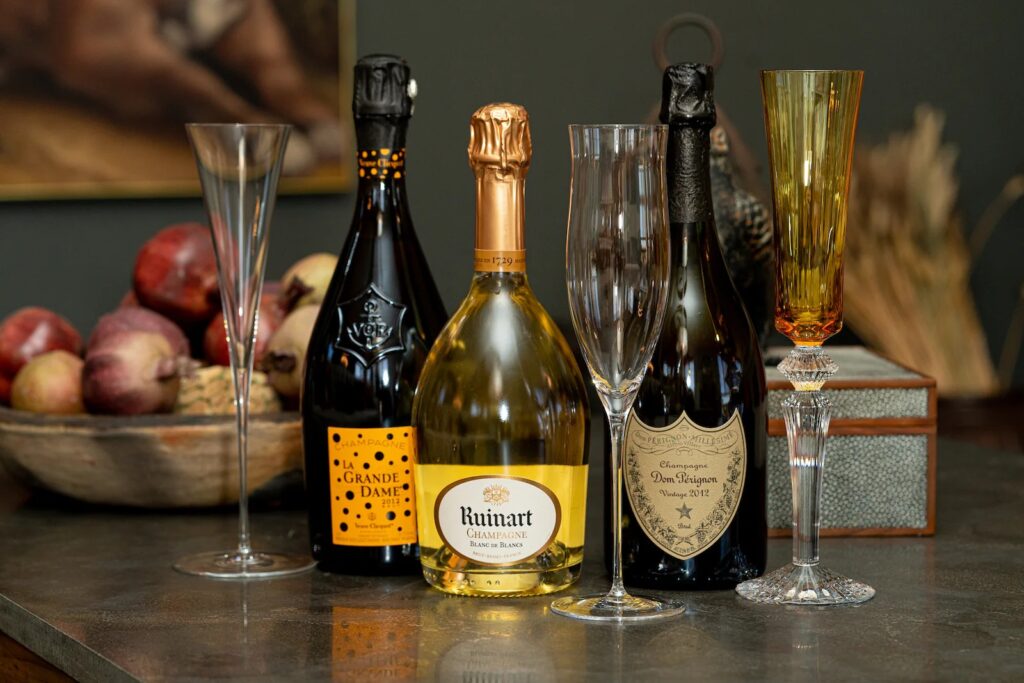Alright, let’s get real for a second—champagne screams “party time,” right? You pop a bottle, everyone’s suddenly fancy, and those skinny flutes appear outta nowhere. Weddings, New Year’s, random Tuesdays—it fits.
But seriously, ever just pause and think: “Wait, exactly how many glasses do we get from this thing?” ‘Cause, let’s be honest, running out mid-toast is tragic.
So here’s the lowdown. This article will break down how many pours you get, what “serving size” even means (because who knows?), and some stuff about the bottles themselves. Oh, and if you’re trying to plan a bash, I’ll throw in a couple of tips so you don’t end up with sad, empty glasses.
How many bottles of champagne does 1 standard bottle have?
An average champagne bottle holds 750 milliliters (ml) or 25.4 ounces of liquid. Pouring into standard champagne glasses, which will hold around 4 or 6 ounces, the average would be a glass of 5 to 6 ounces per bottle.
The Question of Glasses in a Bottle.
Mean Pour:
The average glass of champagne is 4 ounces.
Flutes can contain up to 6 ounces, but the classic pour is 4 ounces.
So:
750 ml/ 120 ml( 4 oz )= 6.25 servings
This implies that a standard bottle can give you 6 full glasses of champagne.
Champagne bottle sizes and the number of glasses
- Splitting (187 ml)
It is also referred to as a mini bottle or one glass
- Demi (375 ml)
Half of the usual bottle
Makes 2 to 3 glasses
- The standard (750 ml)
Common size most generally makes five to six glasses
- Magnum (1.5 L)
Two regular bottles are equal.
Makes 10 to 12 glasses
- Jeroboam (3 liters)
Six bottles equal four bottles.
Makes 20 to 24 glasses
- Rehoboam(4.5 liters)
Six bottles are equal.
Serves 30 to 36 ounces
- Methuselah 6 liters
Eight bottles equal
40-48 glasses
- Salmanazar (9 liters)
Twelve bottles are equal to each other.
These are bigger bottles that are mostly consumed during big parties.
Strategizing Party
In case you are organizing a party and you intend to serve champagne, you must possess the knowledge of how many bottles you can purchase. Read more.
To keep this in mind is a rule of thumb:
When each guest will have one glass, 1 bottle will be needed per 5-6 guests.
In case of toasts, 1 bottle can have 8 guests with small pours.
Example:
Assume you are throwing this party (30 guests) and you plan one glass per head:
30 )6 = 5 bottles of champagne
In case you anticipate two glasses each:
30 x 2=60 glasses
60/6 = 10 bottles of champagne
When there is planning, waste or lack is avoided.
Champagne Glasses: Best Glasses
Several champagne glasses exist:
- Flute: Narrow, standing tall enough to have its bubbles well
- Coupe: more vintage in appearance with wide and shallow sides
- Tulip: A little wider in the waist, gives aroma
In case of traditional events, flutes are used because they retain the bubble longer. An Advanced glass bottle supplier in China makes it possible to supply premium glass bottles.
Secret tips on champagne serving tips
- Chill to serve: Temperature should be 45°F (7 °C)
- Clean flute: Keep the flute residue that kills bubbles
- Pour slowly: to lessen foam and waste.
- Angle bottle: Makes pouring smooth
These are a few hints that can help you get the maximum out of each bottle.
Conclusion
An average champagne bottle would typically pour 5 to 6 glasses when poured in the right way. The mini bottles provide fewer drinks as compared to the bigger bottles, which can serve dozens. When you are having parties, you need to count the number of people in your guest list and how many glasses they will require. Thereafter, you have no problem calculating how many bottles to purchase.
Champagne tastes better with another. Be it during a toast or in a full glass or even a single sip, champagne tastes better or is good with another. You are now armed with the knowledge of the math, and you are all set to plan your next celebration with grace and accuracy.


